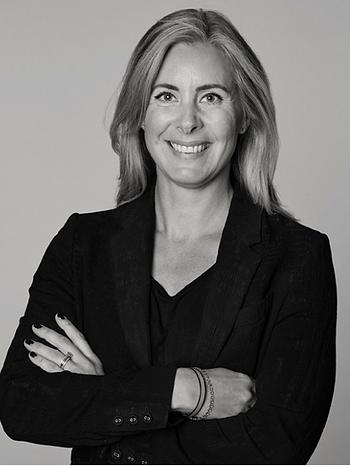Nathalie Djurberg & Hans Berg
"I am a Wild Animal"
Signed Nathalie Djurberg and Hans Berg. Executed in 2011. Animated film, DVD and Digital Betacam, 4:43 min. Edition 3/4. Total edition 4 +2 AP. Signed certificate included in lot.
Provenance
Gió Marconi, Milan.
Private Collection.
Exhibitions
Camden Art Centre, London, “A World of Glass”, 7 October 2011 — 8 January 2012.
More information
Nathalie Djurberg invites us to glimpse snippets of an entirely different world, one at the limits of our imagination – is it a dream, a fairy tale or a fancy dress show?
Nathalie Djurberg and Hans Berg’s strange world of humour and darkness urges us to dare to explore human nature and ourselves!
Djurberg and Berg are counted amongst Europe’s best and most unique artists. Djurberg creates stop-motion animations that musician and composer Berg, sets to music, in a close collaboration that began about fifteen years ago. Videos, spatial installations and sculptures form the foundation of their work. The relationship between humans, animals and forces of nature is the constant, vibrant theme that occupies their shared universe.
The duo’s work contains a large amount of dark humour as well as references to popular culture and art history. Berg’s hypnotic music evocatively emphasises the various emotional states, propelling the story forward. The characters’ sense of isolation is clear – they often project a kind of loneliness, have low self-esteem or a distorted self-image, and looks or behaviours that aren’t usually socially accepted.
The suffering, the inertia, the anger and the sadness – it is all a reflection of the artist herself, even if the events and the characters aren’t autobiographical. As the stories generally tend not to have a clear beginning or an end they are left open to interpretation. Perhaps something happens in a parallel world that changes the ending of the video, or lets it begin where the previous one ended? The films are often about daring to face your nightmares or fears, and having the courage to see what can come out of those encounters.
The world is in constant transformation in Djurberg’s videos. Bodies lose their shapes and acquire new ones in complicated and grotesque metamorphoses. The boundary between animal and human is fluid – they move in the same worlds. The narrative technique is reminiscent of classic children’s stories. At first glance the films appear to follow a traditional narrative, but then surprise the viewer by turning into something completely unexpected. The characters, through instinctive actions, affirm and explore their sexuality and bestiality.
Some characters and places recur, like the human figure with a red mask interacting with three hippopotamuses and three crocodiles in the video piece I am a Wild Animal from 2011. The sculpture group Hippos and Crocodiles form a kind of still image from this video, in which the viewer gets to follow, up close, how animals and humans simultaneously leave the ocean and take the evolutionary leap onto land. The story depicts a man’s awakening as he hears the opinions of animals on humans as more developed beings and that it is our pre-conceived ideas about animals that stop us from living in symbiosis. And just when an understanding between species appears to have been found, the crocodile still takes the conscious (or compulsive) decision to eat the man.
Massimiliano Gioni writes the following lines in the Moderna Museet exhibition catalogue:
“You could say that the all the characters in Djurberg and Berg’s digital fables long to become wild animals. This is almost a reversal of the logic you find in animated Disney films, the archetypes of almost all contemporary fairy tales. In Disney films the animals are metaphors for human behaviour and are domesticated; they are harmless, saccharine, standardised versions of ourselves. In Djurberg and Berg’s work, however, it is the humans that reveal their similarities with the animal kingdom’s beings, by embodying brutally simple desires and yearnings. The comparison with the animal world highlights the way that bestiality is an integrative part of humanity, perhaps even its most basic feature.”
Djurberg’s video “I’m a Wild Animal" has been exhibited, amongst other places, at Camden Art Centre in London from October 2011 to January 2012. The sculpture "Hippos and Crocodiles" (from the video) was separately shown at Gió Marconi Gallery’s Frieze Art Fair London 2011 exhibition.
Zehra Jumabhoy of Art Forum wrote; "I’m a Wild Animal is just as preoccupied with unfurling the beast that lurks behind our “civilized” selves. Here, a skinny man emerges from the mouth of a sweaty hippopotamus only to encounter grinning crocodiles. Though he dons the red mask of a toothy creature, the disguise does not protect him: “I will eat you,” threatens the hippo. “Like it was a candlelight dinner,” corroborates a crocodile. They don’t lie.
Camden Art Centre described the installation as follows:
“Djurberg creates her films with a technique referred to as ‘claymation’. At the Venice Biennale in 2009, she embedded the animations amongst a sprawling jungle of life-sized sculptures immersing the viewer within the immediate materiality of the images depicted on screen.
The crude materiality of the animations seems playful but the scenarios enacted are often disturbing, uncovering taboos or difficult aspects of the human condition such as vulnerability, desire and suffering. The four new films - My body is a house of glass; Monster; Didn’t you know I’m made of butter?; and I’m a wild animal – address a shared theme of sexual discovery, exploring the untamed forces that drive desire and the fragile, precarious nature of this rite-of-passage. The beguiling beauty of the installation contrasts with scenes of wounded flesh or emotional distress, drawing out the connection between desire and suffering, a theme explored by Bataille when he discussed the transgression of taboos in relation to the sometimes violent drives of sexuality. The dark and foreboding atmosphere of the installation also links Djurberg’s work to the subversive imagination of Goya.”




































































